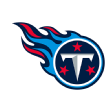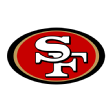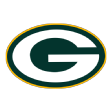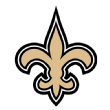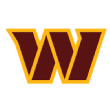Ranking top 30 NBA draft prospects by stats and scouting
Throughout the college season, UCLA's Lonzo Ball and Washington's Markelle Fultz competed for the honor of top prospect in the 2017 NBA draft. And the two rank far ahead of the next-best player in my annual draft projections.
So who is No. 1, Ball or Fultz? And how do the other top prospects fare? Let's take a look.
My projections estimate the number of WARP (wins above replacement player) that each player will average during his first five seasons in the NBA, based on two components.
The first takes translated college or international performance and adds in age to get a stats-only projection. In the list below, players are ranked by their consensus projection, which incorporates a second component -- where players rank on Chad Ford's big board -- to capture the scouting consensus about them for improved historical accuracy.
1. Lonzo Ball

UCLA
Point Guard
Big Board: No. 2
Stats: No. 1
Consensus: 4.1 WARP
Part of the challenge in evaluating Ball is how unusual his skill set is, not just for an elite prospect, but overall.
Every other collegiate player in Ford's top 100 has at least one player in my projection database with a similarity score of 90 or higher. Ball's best match (Kyrie Irving, of all people) is an 87.6. Ball's best comparison is probably Jason Kidd, who played long before the advanced stats era and is not in my database.
2. Markelle Fultz

Washington
Point Guard
Big Board: No. 1
Stats: No. 4
Consensus: 3.3 WARP
While his stats-only projection certainly isn't a negative, Fultz rates at the level of a typical No. 2 pick, even when we account for his spot atop Ford's big board.
Over the 11 drafts for which I have full projections, dating to 2006, No. 2 picks have averaged a 3.3 consensus WARP projection.
3. Jonathan Isaac

Florida State
Forward
Big Board: No. 6
Stats: No. 2
Consensus:2.5 WARP
The big question about Isaac, and the one place where he ranks among the bottom 25 percent of NBA-bound combo forwards, is his ability to create his own shot. He used just 20.3 percent of Florida State's plays as a secondary option behind older prospect Dwayne Bacon.
Get past that, and there's a lot to like about Isaac. He has strong steal and block rates, shot an excellent 59.3 percent on 2-pointers and flashed 3-point range (31-of-89, 34.8 percent).
4. Dennis Smith

North Carolina State
Point Guard
Big Board: No. 8
Stats: No. 6
Consensus: 2.1 WARP
Smith's production was remarkably similar to Fultz's, and his projected player win percentage as a rookie (the per-minute component of WARP, akin to PER) is actually slightly better. Fultz's stats-only WARP projection is still higher because he's six months younger, he has superior size and teams might be concerned about the ACL tear Smith suffered in high school.
Nonetheless, there's a strong case to be made that Smith will slip too far on draft night.
5. Zach Collins

Gonzaga
Center
Big Board: No. 9
Stats: No. 5
Consensus: 2.1 WARP
Despite coming off the bench on a deep, experienced Gonzaga team that lost in the national championship game, Collins rated as the best Zag on a per-minute basis.
He's a high-percentage finisher with good touch at the free throw line. The limited need for traditional bigs hurts Collins, but he's skilled enough that he might be able to play both frontcourt spots in the pros.
6. Josh Jackson

Kansas
Small forward
Big Board: No. 3
Stats: No. 34
Consensus: 1.9 WARP
Jackson has good steal and block rates and is an excellent playmaker for a wing. So why doesn't he project better? Inefficiency is a major culprit.
He's projected for a .494 true shooting percentage as a rookie (league average last season was .552), and those assists come with extra turnovers for a wing. Additionally, Jackson is older than many sophomores, let alone other freshman prospects.
7. OG Anunoby

Indiana
Forward
Big Board: No. 13
Stats: No. 7
Consensus:1.8 WARP
A team willing to draft Anunoby despite the torn ACL that prematurely ended his career at Indiana might get a steal.
Anunoby is the only prospect in this year's draft projected for better than 2.0 steals per 100 plays and 2.0 blocks per 100 opponent 2-point attempts. Historically, several wings who met that criteria have outperformed their draft slot. The group features Robert Covington, Danny Granger, Josh Howard and Andre Roberson, but also includes nonentities Renaldo Balkman, Branden Dawson and Chris Singleton.
8. Jayson Tatum

Duke
Small forward
Big Board: No. 4
Stats: No. 28
Consensus: 1.8 WARP
Tatum is statistically the most generic prospect possible.
He doesn't project in the top or bottom 25 percent of NBA-bound small forwards in any of the 10 categories I use to determine strengths and weaknesses, making him the only college prospect in this year's draft for whom that is true.
9. Lauri Markkanen

Arizona
Power forward
Big Board: No. 10
Stats: No. 13
Consensus: 1.7 WARP
Markkanen is Tatum's opposite in terms of strengths and weaknesses.
He's the only player in my top 20 with at least four statistical weaknesses (rebound, assist, steal and block percentages) yet still has a solid projection because his three strengths (shooting, turnover rate and foul rate) are so good.
10. De'Aaron Fox

Kentucky
Point guard
Big Board: No. 5
Stats: No. 38
Consensus: 1.5 WARP
Because of the regression factor, Fox's poor 3-point shooting isn't a big factor in his low statistical projection, per se. (He's projected to make 30.4 percent of his 3s as a rookie.).
Rather, it's Fox's limited 3-point attempts that are more of an issue; he's projected to take 2-pointers on 63.4 percent of the plays he finishes with a shot, trip to the free throw line or turnover. Among perimeter players in Ford's top 100, only Kentucky teammate Isaiah Briscoe has a higher 2-point attempt rate, and it's hard to score efficiently that way.



















































